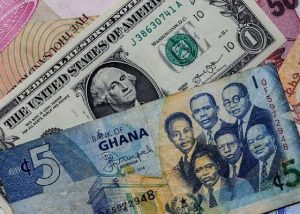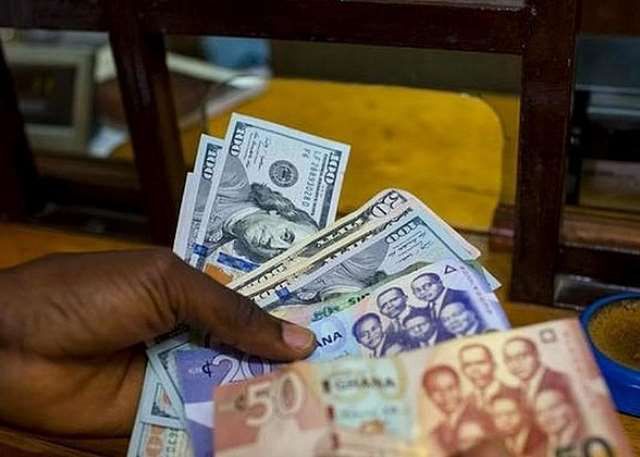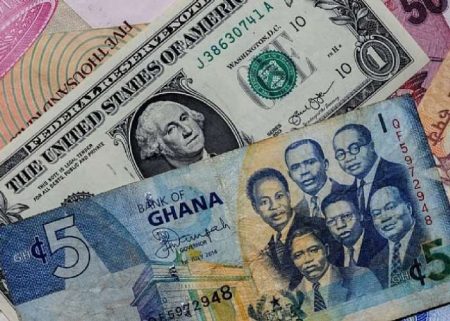The Ghanaian cedi experienced dynamic fluctuations against major international currencies on September 18, 2025, exhibiting variations across different exchange platforms. Data compiled from Cedirates.com, a reputable Ghanaian platform tracking currency and fuel prices, provides a comprehensive overview of the cedi’s performance. The average exchange rate at forex bureaus saw the cedi trading at GHS12.18 for buying one US dollar and GHS12.74 for selling, indicating a noticeable spread between buying and selling prices. This spread reflects the forex bureaus’ margin and the inherent volatility of the currency market. A deeper look at individual forex bureau rates reveals further differentiation, with the cedi trading at GHS13.15 for dollar purchases and GHS13.45 for dollar sales. This wider gap suggests a more cautious approach by individual bureaus, potentially reflecting a higher perceived risk or operational costs.
The Bank of Ghana’s interbank market, representing transactions between banks, offered a more stable exchange rate for the US dollar. The cedi traded at GHS12.24 for buying and GHS12.26 for selling, showcasing a significantly narrower spread compared to the forex bureaus. This tighter range indicates a more regulated and less speculative environment within the interbank market. The difference between the interbank and forex bureau rates highlights the varying dynamics influencing currency exchange in Ghana, with the interbank market offering a more controlled and predictable exchange rate while forex bureaus react more directly to market fluctuations and individual business strategies.
The Ghanaian cedi’s performance against other major currencies, namely the British pound and the euro, followed similar patterns. Forex bureaus offered rates of GHS16.48 for buying and GHS17.29 for selling the British pound, while the Bank of Ghana’s interbank rate stood at GHS16.75. This again demonstrates the wider spread at forex bureaus, reflecting their individual pricing strategies and market responsiveness. For the euro, forex bureaus quoted GHS14.33 for buying and GHS15.04 for selling, with the interbank rate at GHS14.52. These variations across currencies underscore the specific market forces influencing each currency pair, including international exchange rates, local demand, and individual trading strategies.
Money transfer operators, a crucial component of the Ghanaian economy due to significant remittances from abroad, offered competitive rates for international transfers. LemFi and Afriex, two prominent players in this space, offered identical rates of GHS12.25 for US dollar remittances to Ghana, closely aligning with the Bank of Ghana’s interbank rate. This competitive pricing strategy aims to attract customers by offering favorable exchange rates for their remittances. Similarly, both platforms quoted GHS16.77 for British pound remittances and GHS14.58 for euro remittances, again reflecting a competitive landscape and alignment with broader market trends. These unified rates suggest a strong focus on transparency and simplicity, appealing to customers seeking clear and predictable transfer costs.
Digital subscriptions, a growing segment of online transactions, present a slightly different exchange rate landscape. Payments for services like Netflix, Spotify, and Apple Music via Visa and Mastercard incurred exchange rates of GHS13.11 and GHS13.16, respectively. These rates, slightly higher than the Bank of Ghana’s interbank rate, likely reflect the transaction fees charged by international card networks and payment processors. The marginal difference between Visa and Mastercard rates might be attributed to varying processing fees or internal pricing policies. This distinct category of transactions underscores the complex interplay of factors influencing currency exchange rates in the digital economy.
In summary, the Ghanaian cedi’s exchange rate on September 18, 2025, showcased a dynamic interplay of market forces, reflecting variations across different exchange platforms and currencies. Forex bureaus exhibited wider spreads between buying and selling rates, indicative of their responsiveness to market fluctuations and individual pricing strategies. The Bank of Ghana’s interbank market presented a more stable environment with narrower spreads. Money transfer operators offered competitive and unified rates, reflecting a focus on transparency and attracting remittance flows. Finally, digital subscription payments through international card networks incurred slightly higher exchange rates due to transaction fees. This multifaceted view of the cedi’s performance highlights the complexities and nuances of currency exchange in a globalized economy and the importance of understanding these variations for informed financial decision-making.














